
Suddenly, it’s all change! After weeks of dreary, relentless rain, it has turned very cold and we had our first frost last night. In anticipation, I managed to give the lawns their final cut and edging of the year. You wouldn’t know it from this pic but it is mostly moss anyway! The trees are bare, the leaves swept and raked, the pure white trunks of the Jacquemontii Silver Birches glistening in the morning sunshine.
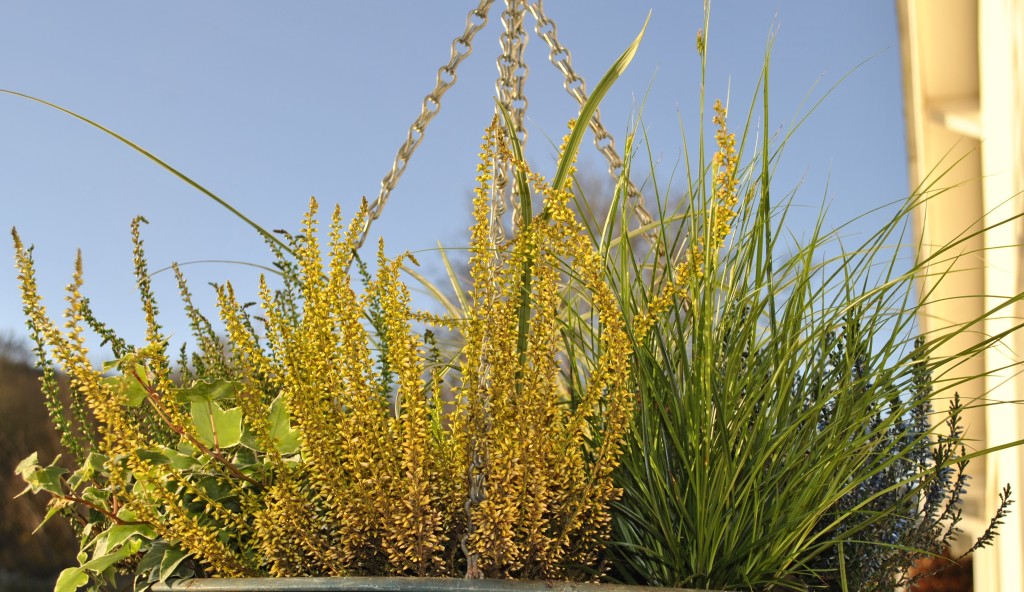
I don’t normally go in for sprayed heathers but I wanted some winter basket plants and I was in a hurry! A yellow heather could almost be realistic…..
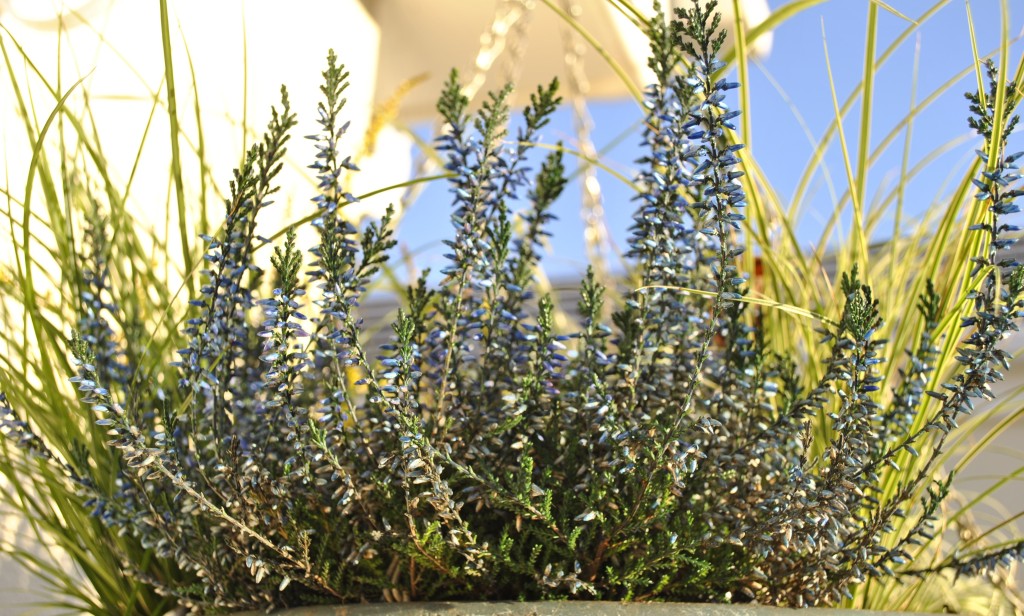
The blue one however, definitely not! My local nursery makes up hundreds of baskets and tubs for pubs and shops and tell me these sprayed heathers are popular because they will take the weather, look colourful all winter and don’t need any looking after!
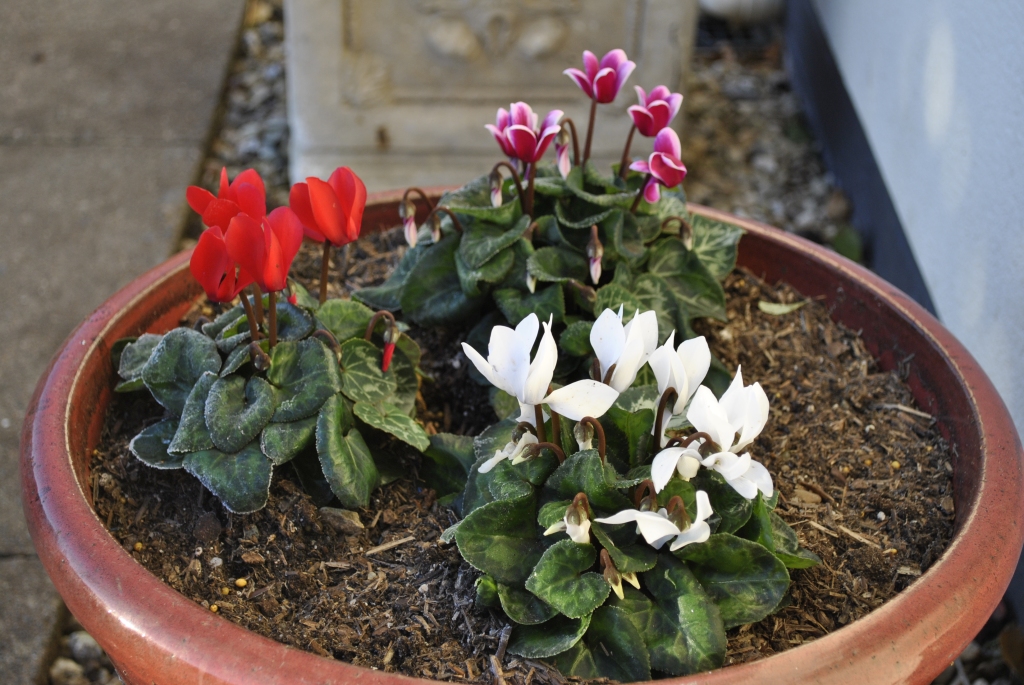
I am not normally a fan of these Cyclamen persicum either, but needs must! I was very disappointed with the winter flowering pansies last year which didn’t really get into their stride until March! These colourful cyclamen will take a few degrees of frost but hate rain, so a sheltered spot under the overhang of the eaves should protect them. This is a big pot of 15 Tulips which should take over in April/May if the cyclamen last that long!

The naturalised early Narcissus are already up so I have to be extra careful when clearing up the leaves in the borders. To be honest though, these Silver Birch leaves will break down very quickly and the worms will make short work of them.
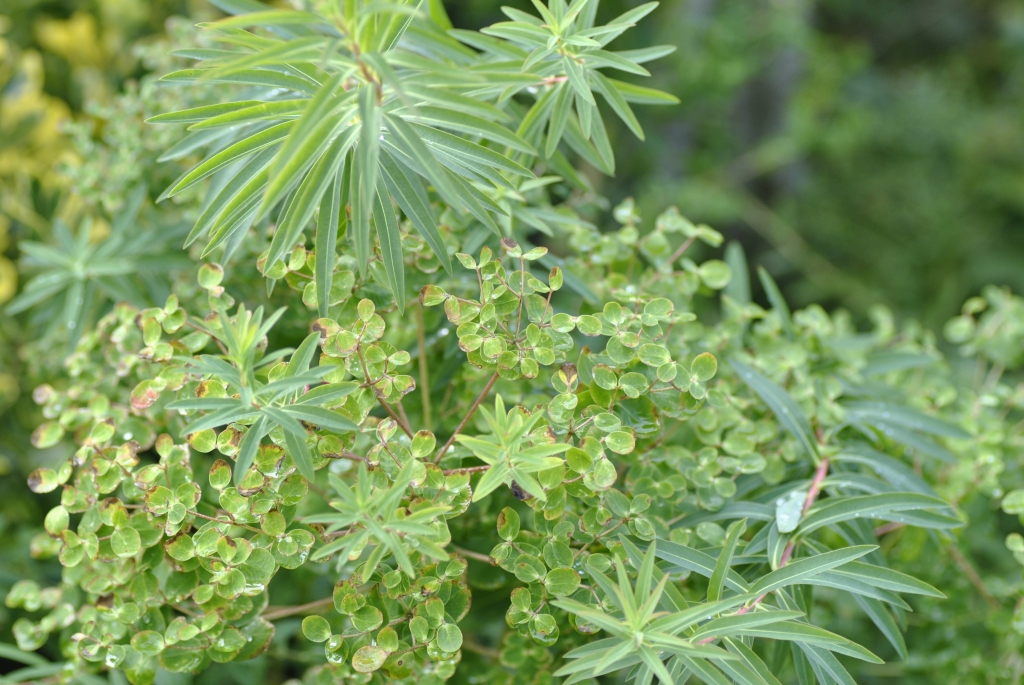
Just three weeks ago, the Euphorbia palustris looked like this, lush green foliage and seedheads.
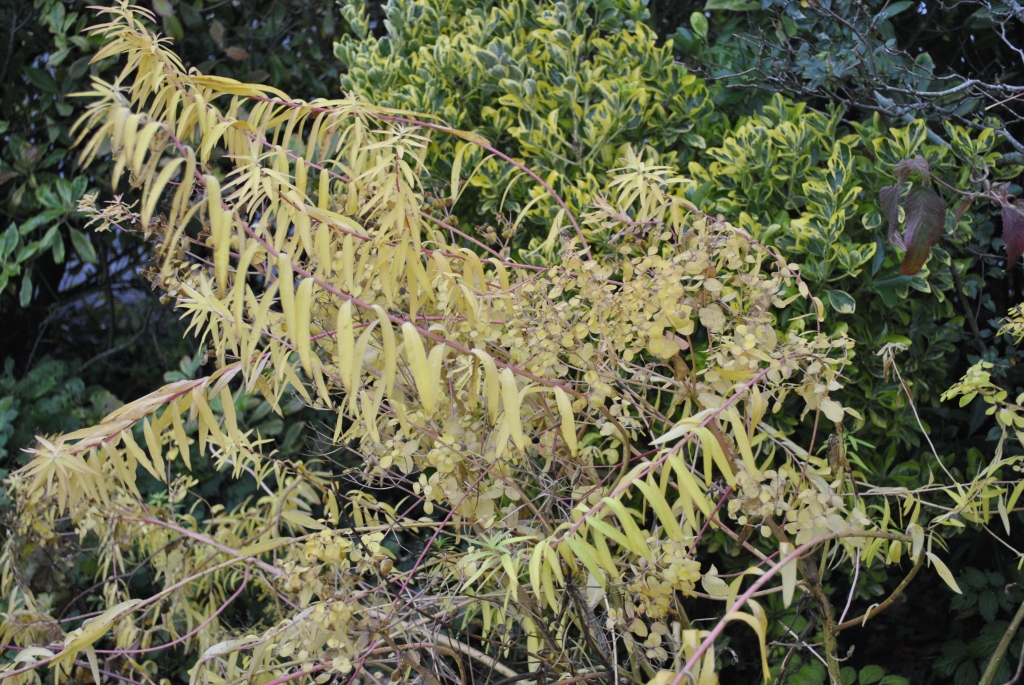
Today, it looks like this! I like taking photos of plants when they are dying down or going dormant, it is often when they look their best! It is also a good reminder of the natural life cycle of deciduous and herbaceous plants. I caught a family of Tits inspecting this plant for spiders and other creepy crawlies this week so they also play an important ecological role as they fade away.

One of the things about writing a blog like this is that you inevitably get things wrong from time to time. Last week I mentioned what I thought was Persicaria microcephala ‘Red Dragon’ and one of my subscribers politely pointed out that it was not! I am indebted to her and everyone else for keeping me right! It has now been re-labelled without the cultivar name which is a strikingly different colour! What I have is the species, not ‘Red Dragon’.
Thank you for all your comments and questions. I read them all and reply to the vast majority. It’s nice to know you are there!
Have a great weekend
David















